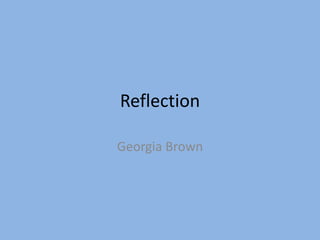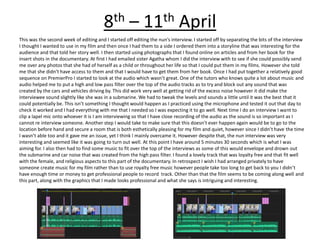This week the student continued research for their documentary film project. They analyzed responses to a questionnaire they distributed to gather information about audience interest in documentaries and religion. The student used this information to define their target audience and aims. They also contacted potential interview subjects to schedule filming. The student reviewed existing documentary films and styles to inform technical decisions for their own film, such as camerawork and crew size. Researching film festivals helped the student plan for presenting their completed film. Overall, the research is helping the student tailor their film to better engage their target audience.














